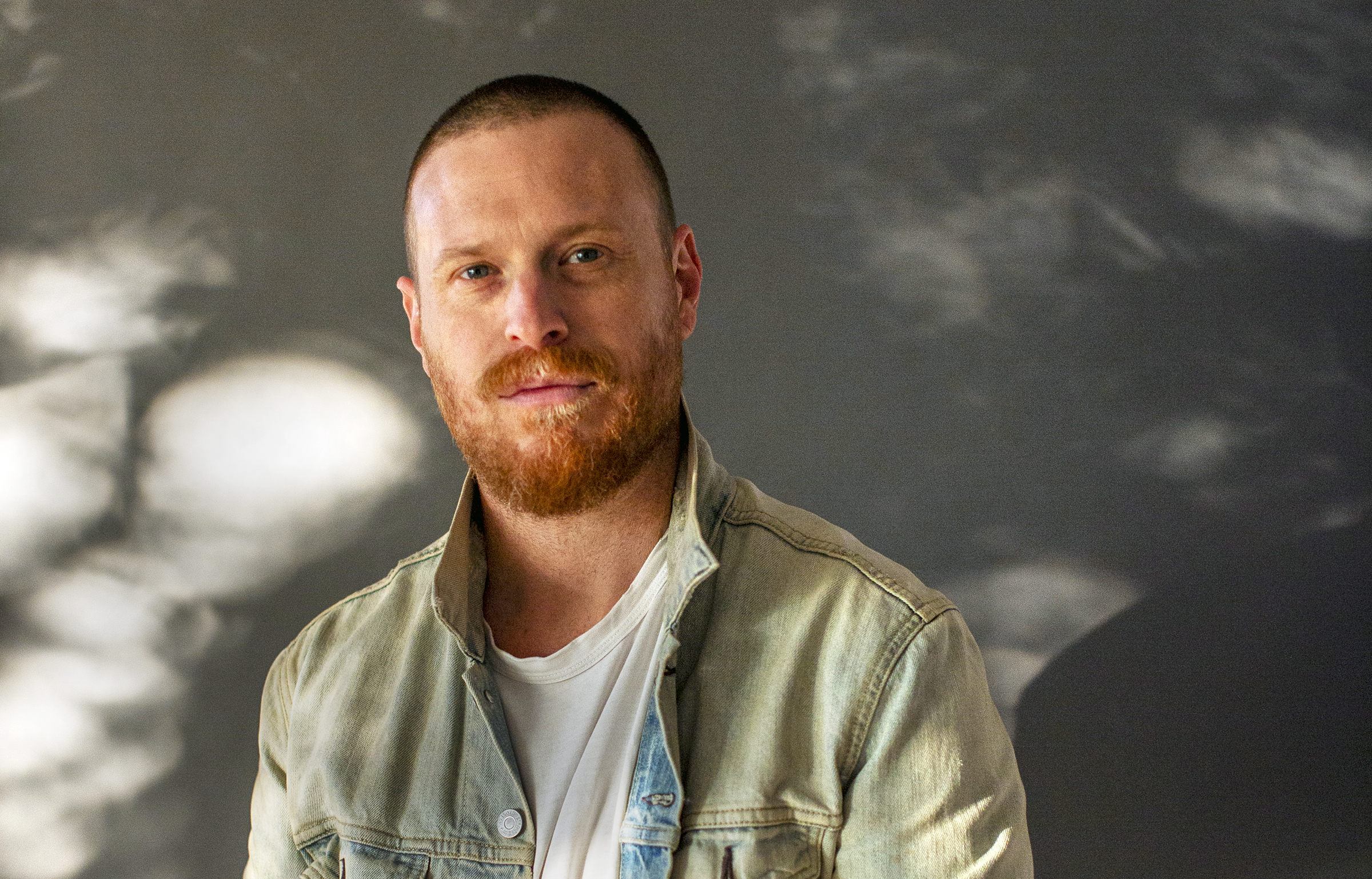For Content Creators, AI Makes It a Whole New World
Will your next news anchor be an AI avatar?

(Image credit: Channel 1ai)
Aldous Huxley’s classic novel “Brave New World” is a science fiction thriller set in a murky future with a highly ordered society. While Huxley and other sci-fi writers tended to focus on futuristic societies and novel personal interactions, they didn’t quite predict the mix of technology that we have today.
Yet the recent creation of artificial intelligence systems that can create new audiovisual content from just a written description is the brave new world that we face in the film and television industry. Like any other technology, it is used by people—some of whom are good, some are bad, and most are a mix in which it is hard to separate the difference.
People in the industry, from the smallest players to the biggest moguls, are watching AI and expecting big changes. One of the biggest is Jeffrey Katzenberg, co-founder of Dreamworks and the former chairman of Walt Disney Studio, who recently participated in a Bloomberg-sponsored forum.
“I don’t know of an industry that will be more impacted than any aspect of media, entertainment and creation,” Katzenberg said. “In the good old days, you might need 500 artists and years to make a world-class animated movie. I don’t think it will take 10% of that three years from now.”
Multimedia Building Blocks
One application that can create graphics—or a whole family of graphics—from written content is called Lore Machine. Although it is predominantly for graphics and not moving images, it can create a graphical story based on a few sentences of description.

“Lore Machine is a web application that transforms story text into multimedia adventures,” said Thobey Campion, founder of the Los Angeles-based startup. “At the helm of Lore Machine, a writer can enter natural text like a novel, a screenplay, a resume, song lyrics or a blog post, and generate galleries of imagery, animation and audio all with persistent character, location and art styles. These multimedia building blocks can then be assembled into every audiovisual story format imaginable, including multimedia articles, graphic novels/manga, presentations, children’s books, RPG games and video.”
Campion said that Lore Machine is the first AI system to achieve multimedia generation at story scale, and that it can transform still imagery into 5- to 10-second videos.
The professional video industry's #1 source for news, trends and product and tech information. Sign up below.
Concern Over Ethics
Ethics are a major concern regarding AI in the film and television industry. In other words, how do we prevent an AI system from creating content using the likeness of well-known people, or using copyrighted content?
For example, with an AI system capable enough, it could create scenes from the latest Jack Reacher novel using an on-screen person that looks an awful lot like Tom Cruise. And that is just the tip of the iceberg that we can discuss in a respectable trade journal—let’s leave the 90% that’s below the surface unmentioned for the moment.
Lore Machine has safeguards in place to maintain originality and prevent ethical problems, Campion said.
“Lore Machine is BYOL: Bring Your Own Lore,” he said. “That means the first thing a user does is enter original text, which ensures original authorship. The ‘Preset Palace’ is filled with ethically trained image models that [prevent creation of certain content scenarios]. Over the course of the next several months, we are releasing some styles in partnership with artists that cost extra money. All of those proceeds go to the artists.”
Further, Lore Machine is not simply a one-click creation tool, Campion said.
“It’s a workflow that requires many decisions to get to your outputs, which in turn ensures sufficient transformation,” he said.
AI has already been visible to television viewers around the world, including in North America. However, it is entirely possible that you didn’t recognize that AI was at work.

“One visible way in which AI is being used in broadcasting, particularly during sports events, is through content enrichment features such as real-time statistics and graphic overlays,” said Alex Rouxel, senior project manager for data and AI at the European Broadcasting Union. “AI algorithms analyze the game in progress and provide instant statistics.”
Guiding What the Viewer Sees
Furthermore, broadcasters use AI behind the scenes in ways that ultimately guide what the viewer sees.
“AI is used in content recommendation systems that analyze viewing habits and metadata to personalize content suggestions for viewers,” Rouxel said. “This increases user engagement without being visible on the screen.”
It’s impossible to say where AI might take us several years from now, but Rouxel has some thoughts on broadcasters’ use of AI in the near future.
“Broadcasters are likely to increasingly use AI for automated video editing and enhancement, speeding up the production process by quickly sorting and editing footage,” he said. “Editing can be tailored to the audience on the social networks where the content is posted.”
This use of AI is treating it as though it is an assistant that will tirelessly work on projects that actual people could do. It is valuable work that frees up creative people to do more creative things, but it is not the sort of AI that might take creative work from creative people.
So is creative work by creative people safe from the challenge of AI?

“AI is going to bring on the greatest change in the history of the media industry,” said Roy Folkman, director of technical sales for CineSys.io, a Houston-based systems integrator specializing in digital media. “The only way we are going to be able to navigate the overwhelming changes brought on by AI is through thoughtful and respectful exchange of ideas.”
In an online presentation in March, Folkman made his point about changes in the film and television industries with a simple end title graphic that showed all the components of the film being created by AI. He went on to say that he and many others value human creativity, and that actual art created by actual humans will always have a place.
Channel 1.AI
Later this year, a project called Channel 1.ai will begin news broadcasts using AI-gathered information and delivered by AI-generated “talent.” Calling itself “a new personalized global news network, powered by generative AI,” Channel 1.ai has a demo that looks uncannily like a first-class news operation, using “talent” that mixes the right amount of attractiveness with the gravitas we expect from news anchors and reporters.
The lengthy Channel 1.ai demo shows off one of the benefits of AI: It can deliver the news with the same “on-camera talent” in any language. The demo has one of the anchors speaking in English, then what I assume is perfect Greek, Tamil and Filipino. Even Walter Cronkite couldn’t do that.
It could be possible for the entire world to consume the same news broadcast, in each country’s native language. I don’t know if that is wonderful or scary, but it is mind-blowing.
Channel 1.ai promises that its news will be sourced and delivered in accordance with accepted news reporting standards and verified by real journalists. However, what is to stop some organization with more nefarious goals from delivering bogus news polished up with a pleasant AI sheen? It’s all too easy to imagine dozens of competing AI newscasts in every language, with “on-camera talent” racing to pander to the lowest-common denominator.
To learn more about Channel 1.ai and form your own opinion, visit www.channel1.ai.
As I write this, no one can predict exactly how AI will affect the industry. It is certain that any limitations put on it by corporations or governments will be quickly either ignored or bypassed. Clearly, any government or well-funded entity can create something along the lines of Channel 1.ai. And not every government or well-funded entity has the best intentions toward our fellow earth dwellers.
As a content creator myself, I am curious about how generative AI can help me visualize the stories I have in my head. I already use AI-powered software to improve resolution, and make videos and photos better looking. (In fact, I used AI-driven software to improve the clarity of a couple of the photos associated with this article.) Generative AI, if I could get a handle on it, could let me tell a story that I could not otherwise tell using the basic tools I have.
The next five years look to be very exciting—or nerve-wracking for some—with respect to the use of completely AI-generated content. I am convinced that it will be an eye-opening experience for all of us. l
Bob Kovacs is a long-time television engineer, video creator and writer. You can find him on YouTube at youtube.com/bob%20kovacs.
Bob Kovacs is the former Technology Editor for TV Tech and editor of Government Video. He is a long-time video engineer and writer, who now works as a video producer for a government agency. In 2020, Kovacs won several awards as the editor and co-producer of the short film "Rendezvous."

